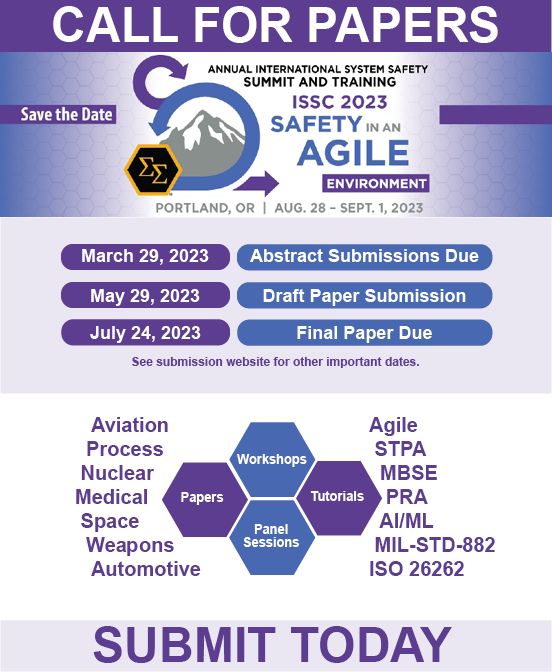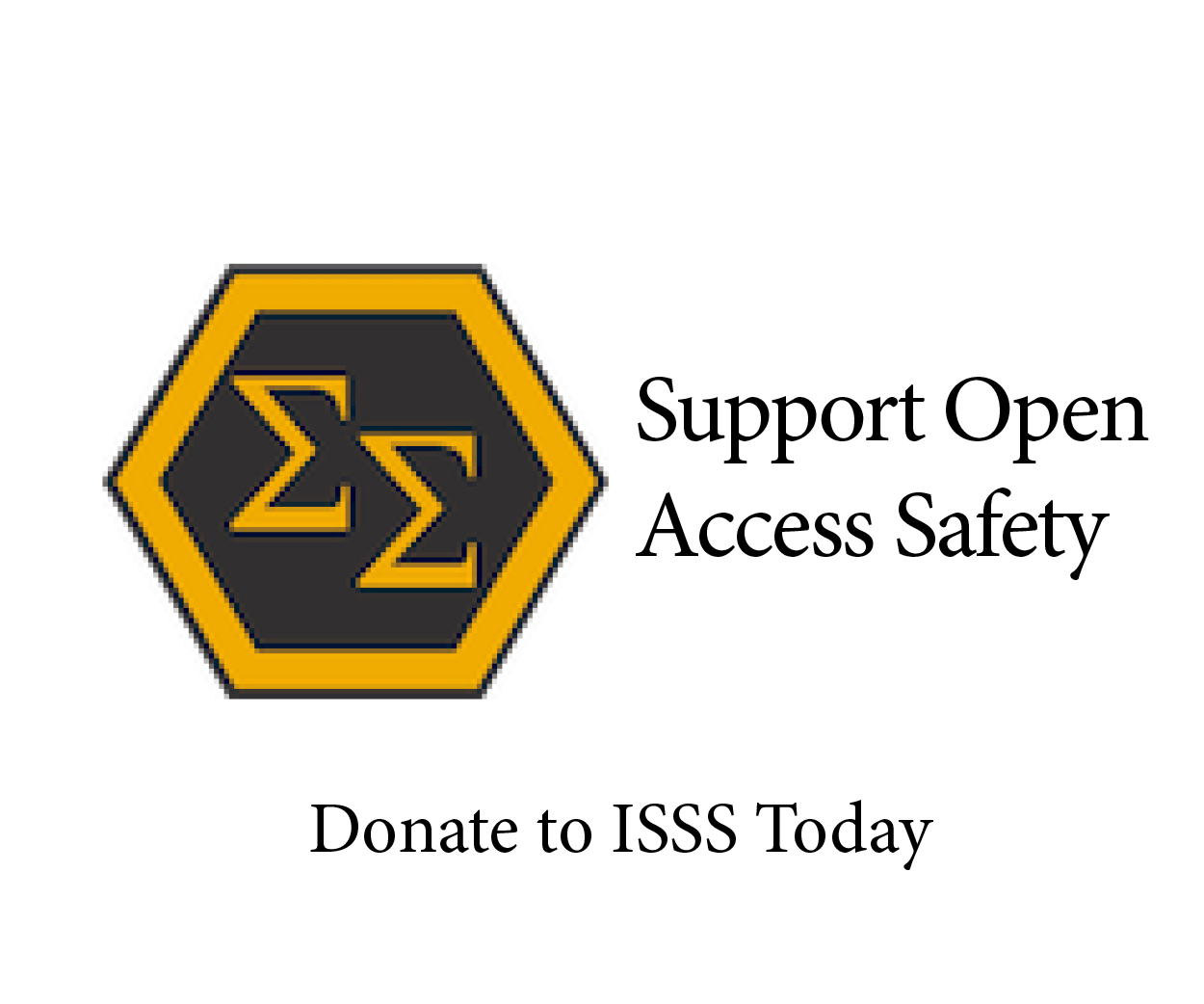Assessing the Software Control Autonomy of System Functions in Safety-Critical Systems
DOI:
https://doi.org/10.56094/jss.v57i3.206Keywords:
software safety, software control category, hazard analysis, safety processAbstract
Software Control Category (SCC) denotes the degree of control autonomy, command and control authority, and redundant fault tolerance software has over hazardous system functions of safety-critical systems. The use of SCC for determining the software contribution to system risks is a unique feature of the MIL-STD-882E System Safety Standard. A lower SCC designation means that the software system has a greater control autonomy over hazardous system functions, whereas SCC 1 means complete autonomous control. Software with greater control autonomy over hazardous system functions require greater effort to assure reliability and safety. Correct assessment of the SCC level of hazardous system functions is crucial for optimizing the safety property of a system developed under budget, schedule, and resource constraints. Beyond the categorical definitions provided by the MIL-STD-882E Standard, there is little information on conducting an SCC assessment. To close this knowledge gap, we present an SCC assessment method. Our paper will describe in detail the process and rules for assessing SCC. For illustration, we apply our method to assess the SCC of several safety-significant functions of an automobile’s brake-assist system.
References
Wikipedia (2022a). Boeing 737 MAX groundings. Retrieved Jun 20, 2020, from https://en.wikipedia.org/wiki/Boeing_737_MAX_groundings
Wikipedia (2022b). Software System Safety. Retrieved Jun 20, 2020, from https://en.wikipedia.org/wiki/Software_system_safety
Safety (2012). Department of Defense Standard Practice: System Safety (MIL-STD-882E). Retrieved July 3, 2022, from EverySpec: http://everyspec.com/MIL-STD/MIL-STD-0800-0899/MIL-STD-882E_41682/.
Charette, R. N. (2021). How Software Is Eating the Car. IEEE Spectrum. Retrieved May 8, 2022, from https://spectrum.ieee.org/software-eating-car.
JSSSEH (2010). Joint Software Systems Safety Engineering Handbook.
JS-SSA-IG (2018). Joint Services - Software Safety Authorities - Software Systems Safety: Implementation Process and Tasks Supporting MIL-STD-882E, JS-SSA-IG Rev. B.
NATO (2016). Guidance on Software Safety Design and Assessment of Munition-related Computing Systems. Edition B (Version 1). North Atlantic Treaty Organization. Allied Ordinance Publication.
Lawrence, J. D. (1996). Software Safety Hazard Analysis, NUREG/CR-5430 UCRL-ID-12254.
https://doi.org/10.2172/201805
Martins, L. and Gorschek, T. (2017) "Requirements engineering for safety-critical systems: overview and challenges," IEEE Software.
https://doi.org/10.1109/MS.2017.265100352
Martins, L. and Gorschek, T. (2020), "Requirements engineering for safety-critical systems: An interview study with industry practitioners," IEEE Transactions on Software Engineering.
https://doi.org/10.1109/TSE.2018.2854716
Smith, R. (2018) Verifying Software Control Categories (SCCs) Using Quantitative Fault Tree Analyses (FTAs). Retrieved May 5, 2022, from https://ndiastorage.blob.core.usgovcloudapi.net/ndia/2018/systems/Thurs_21310_Smith.pdf.
ARP4754 (2010). Guidelines for Development of Civil Aircraft and Systems. Aerospace Recommended Practice 4754.
Ryan, T. (2020). "Rear-End Car Accident Statistics," Car Accident Case Law. Retrieved Apr 3, 2022, from https://www.caraccidentcaselaw.com /info/rear-end-collision-statistics/.
Danhauser, C. (2022). The Concept of Software Principal for Safety. International System Safety Conference 2022 (Paper in review).
IEEE-1633 (2016). IEEE Recommended Practice on Software Reliability. IEEE Std 1633-2016.
Tran, V., et al. (2021a). Functional Hazard Analysis for Engineering Safe Software Requirements (Extended Version). Presented at the 5th International Conference on Information and Computer Technology – Virtual (CICIT 2021). https://doi.org/10.1109/ICICT52872.2021.00031
Tran, V., et al. (2021b). Assessing the Software Risk Contribution to System Hazards using MIL-STD-882E: Challenges and Recommendations (Extended Version). Presented at the 37th International System Safety Conference – Virtual (ISSC 2021). Retrieved July 10, 2022, from www.linkedin.com/in/vuntran.
Tran, V., et al. (2022c). Functional Hazard Analysis of an Adaptive Cruise Control System - A Software Safety Requirements Engineering Case Study (Extended Version). Presented at the 68th Annual Reliability and Maintainability Symposium. Retrieved July 10, 2022, from www.linkedin.com/in/vuntran.

Downloads
Published
Versions
- 2023-02-21 (2)
- 2022-10-04 (1)
How to Cite
Issue
Section
Categories
License
Copyright (c) 2022 Vu N. Tran, Viet N. Tran, Long V. Tran

This work is licensed under a Creative Commons Attribution-NoDerivatives 4.0 International License.













